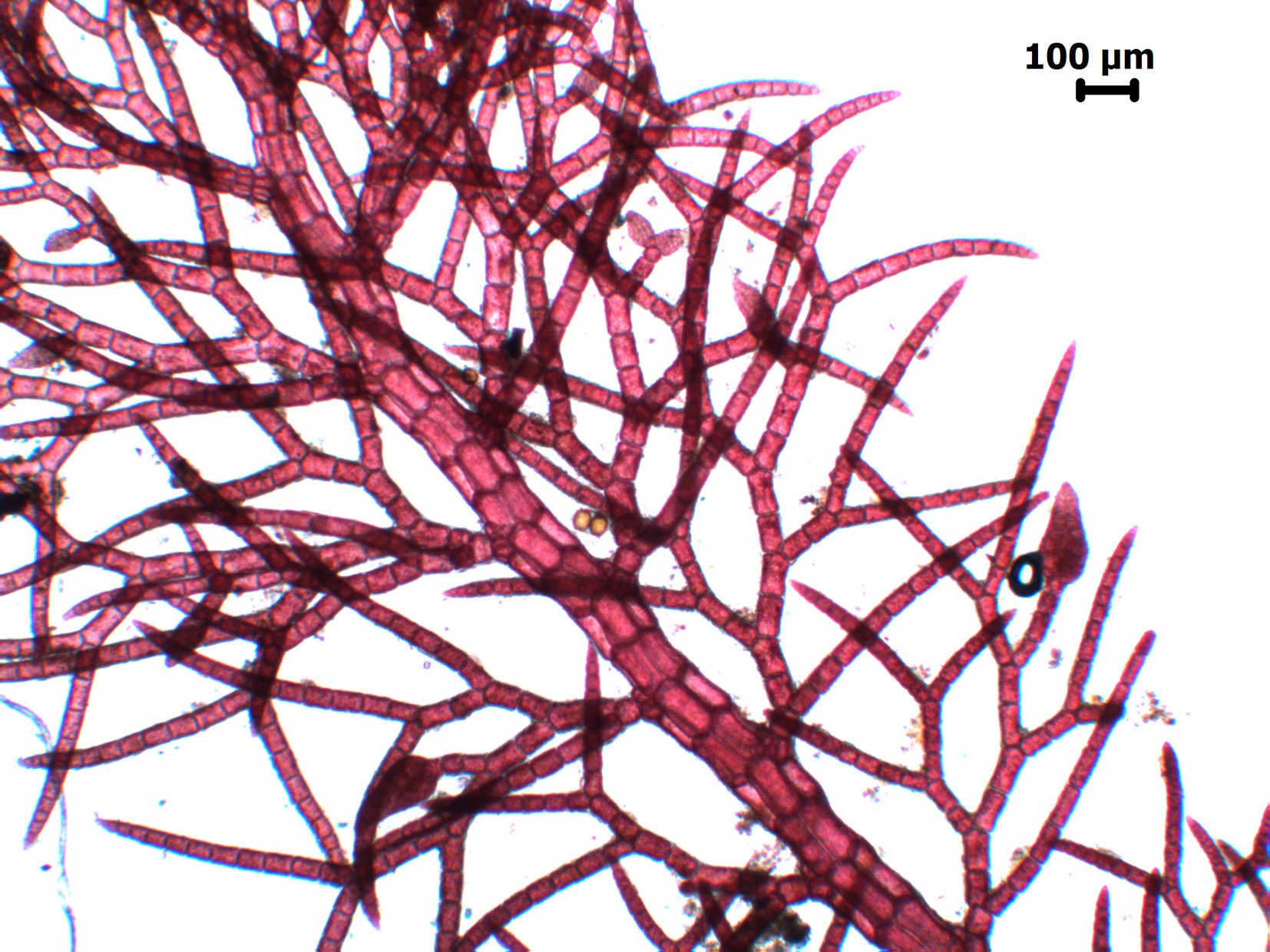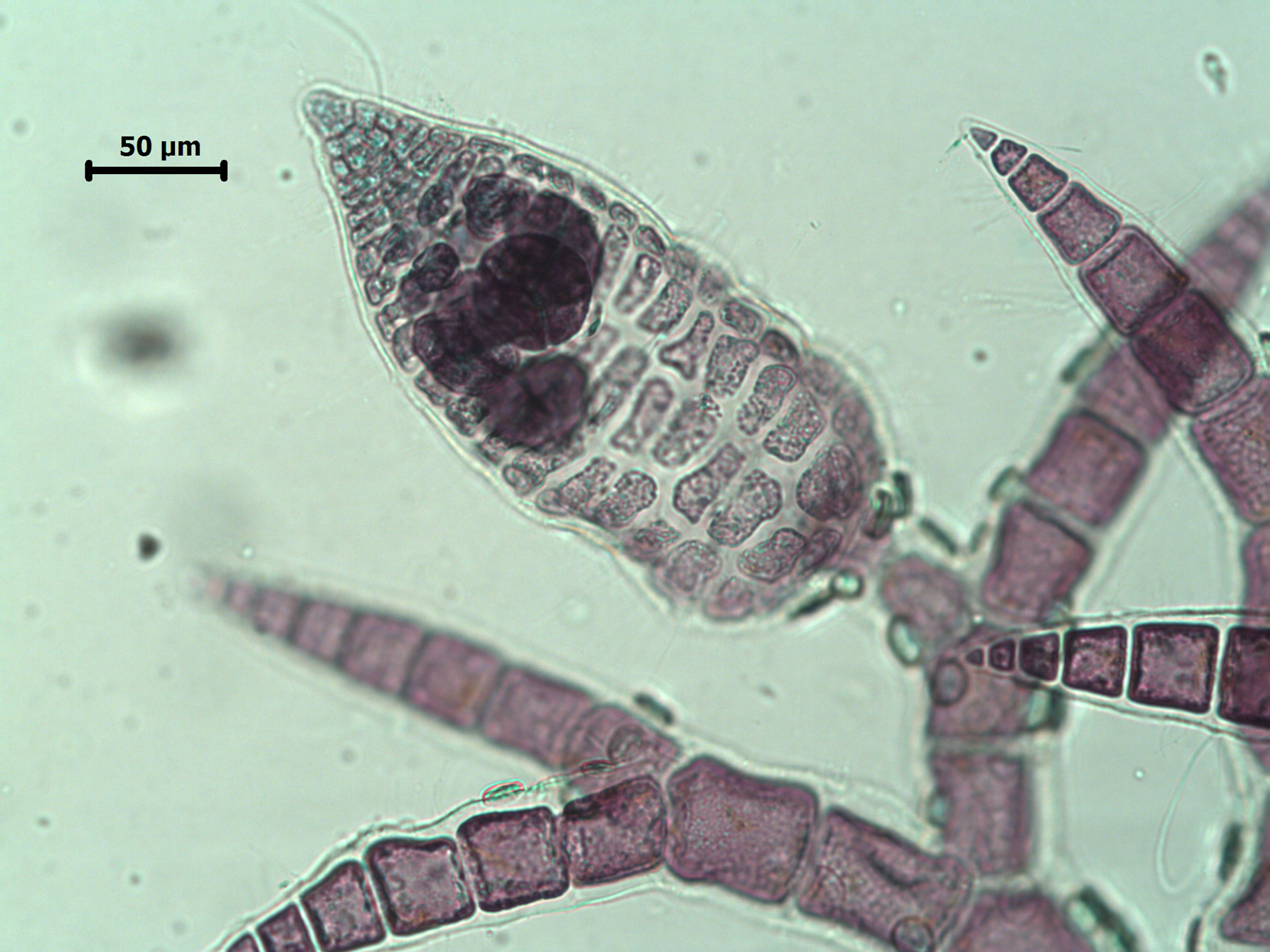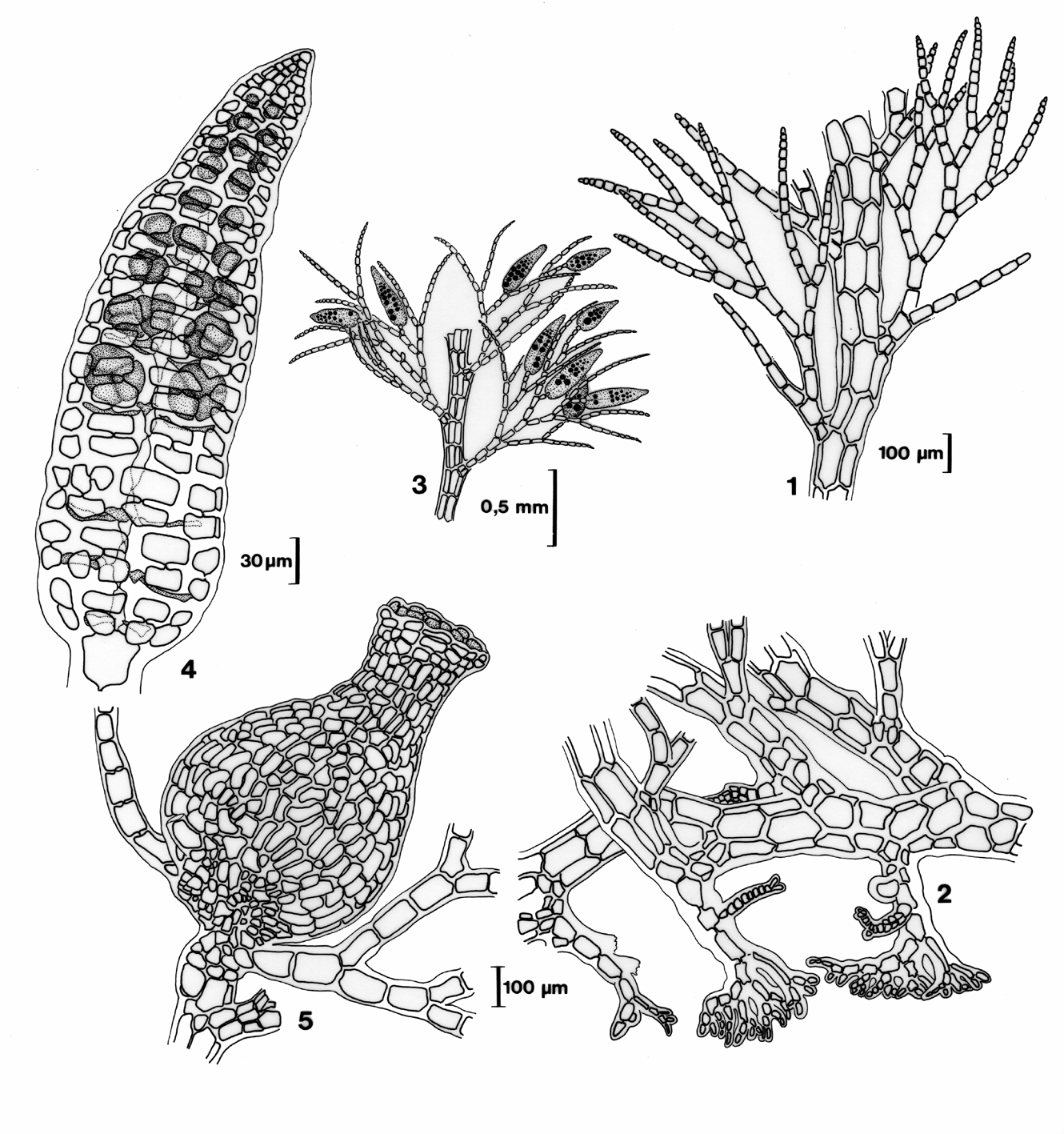Seaweeds of the South African South Coast


Order Ceramiales
Family Dasyaceae
Heterosiphonia crispa (Suhr) Falkenberg 1901: 642-643
Plants largely prostrate, often entwined among other algae in turfs. Main prostrate axes attached by branched multicellular haptera developing from modified pseudolaterals. Main axis up to 200 µm in diameter; pseudolaterals alternate, distichous, arising from every second segment. Segments with four pericentral cells, cortication absent. Pseudolaterals, with exception of the basal segment, monisiphonous, subdichotomously branched every second segment; terminal ramuli 5-10 cells long with acute apices. Tetrasporangial stichidia borne on pseudolaterals, replacing one of the branches of an ultimate pseudodichotomy. Stichidia conical to cylindrical, up to 750 µm long and 150 µm in diameter; segments usually with four pericentral cells and tetrasporangia. Sporangia globose, ca. 50 µm in diameter, tetrahedrally divided, pericentral cells with two groups of two cover cells. Cystocarps up to 1 mm long, urn-shaped, with rather long neck and wide ostiole.
Collections, ecology and regional distribution
Recorded from Lamberts Bay on the west coast to Sodwana Bay in Kwazulu-Natal (9-57). Common in turfs of mixed algae and mussel beds in the lower eulittoral.
World distribution: Also recorded from Namibia (Rull Lluch 2002) and from Mozambique (as H. capensis Falkenberg: Silva et al. 1996).
Type locality: False Bay, Western Cape, South Africa (Silva et al. 1996).
Note: We follow Stegenga et al. (1997) in including H. capensis Falkenberg in H. crispa.

Heterosiphonia crispa, fresh specimen, Nature’s Valley.

Heterosiphonia crispa, tetrasporangial stichidium, stained slide.

Heterosiphonia crispa. 1. Detail of main axis with pseudolaterals. 2. Prostrate axis, showing attachment structure. 3-4. Tetrasporangial stichidia. 5. Cystocarp. Reproduced from Stegenga et al. (1997).
References Heterosiphonia crispa
Falkenberg, P. 1901. Die Rhodomelaceen des Golfes von Neapel und der angrenzenden Meeres-Abschnitte. Fauna und Flora des Golfes von Neapel, Monographie 26. pp. i-xvi, 1-754, 10 figs, 24 pls. Berlin.
Rull Lluch, J. 2002. Marine benthic algae of Namibia. Scientia Marina 66 (Supplement 3): 258 pp.
Silva, P.C., Basson, P.W. & Moe, R.L. 1996. Catalogue of the benthic marine algae of the Indian Ocean. University of California Publications in Botany 79: 1-1259.
Stegenga, H., Bolton, J.J. & R. J. Anderson. 1997. Seaweeds of the South African west coast. Contributions from the Bolus Herbarium 18: 655 pp.
Cite this record as:
Anderson RJ, Stegenga H, Bolton JJ. 2016. Seaweeds of the South African South Coast.
World Wide Web electronic publication, University of Cape Town, http://southafrseaweeds.uct.ac.za; Accessed on 07 January 2026.